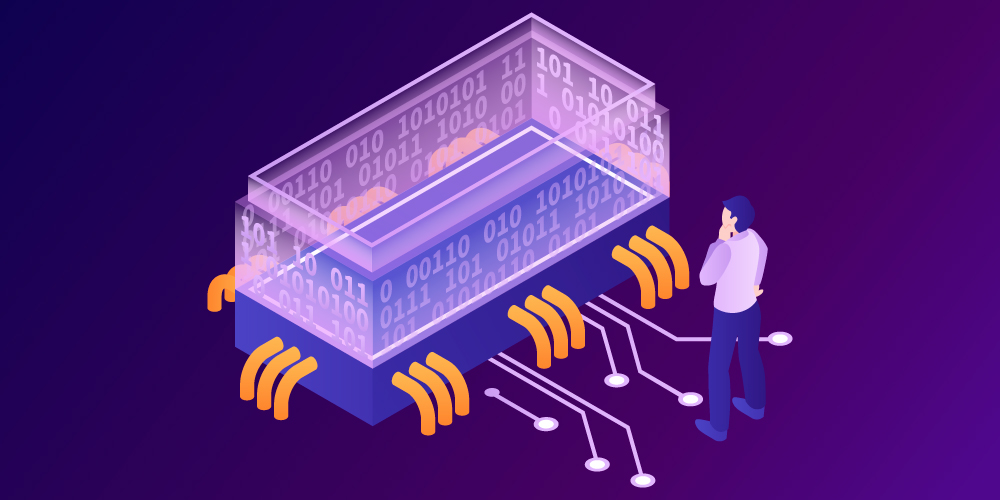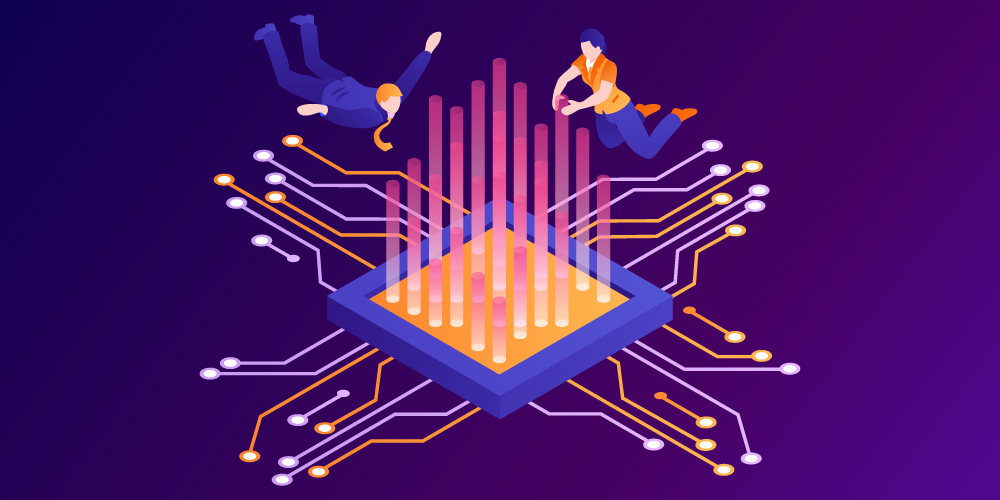If there’s one thing 2020 has taught us, it’s predicting the trends that will shape the next year. It is hoped that the moment will come when the pandemic will be declared over, and we will be able to return to normal life. However, this will be the new normal, where digital technologies will become much more common in our society, in both good and bad ways.
2021-the beginning of the era of digitalization
Very few would believe that by mid-2020, most organizations will be working from home. However, some trends are just that.
First, 5G has really become mainstream, as most smartphone manufacturers have now released 5G phones. According to a recent Huawei conference, there are already 130 million 5G users. Many organizations are experimenting with private 5G networks, and Verizon has even launched a “Private 5G Networks as a Service” solution.
Secondly, a few months ago we saw the launch of the main Polkadot network, and Cosmos continued to grow. Many foresee that Polkadot, which allows you to connect individual blockchains, will become a serious competitor to Ethereum, even with Ethereum 2.0 launched.
In 2020, we also noticed an increased focus on tokenomics and crypto startups: the Security and Exchange Commission (SEC) recently changed its rules to make it easier for cryptocurrency companies to raise funds. Further, in 2020, AI has become more advanced, and DeepMind recently announced that they have found a solution to the “protein folding problem,” but concerns are mounting as AI plays an increasingly important role in organizations. Moreover, AI has become better at producing fake news, such as deepfakes. Because of Covid-19 and the US election in 2020, there was a tsunami of misinformation, which is becoming increasingly difficult to recognize.
The machine-augmented humans haven’t materialized yet. However, due to the pandemic, the number of digital employees has increased dramatically. Finally, as the Internet of Things continues to grow, the peripheral computing industry is expected to grow to $ 9 billion by 2024.
Although 2020 has been called the Year of Convergence, nothing prepared us for the changes that eventually occurred this year. The world has come together to create several coronavirus vaccines in just one year, while the vast majority of organizations around the world have managed to switch to remote work. The world is struggling.
Here are five key strategic technology trends for 2021.
Digitalism is not going anywhere and will expand rapidly

The history of digitalism explains the future as a struggle for data between companies and governments trying to collect as much data as possible, and citizens trying to protect their data and privacy. Digitalization is a world in which data is the most important resource in society.
The idea is that because of the ever-increasing demand for data, corporations and governments in some countries consistently and knowingly violate the rights, trust, privacy, and freedom of consumers. Ever-intelligent AI, faster super-and quantum computers, combined with constant data collection, mean that our society is gradually turning into a surveillance society if we can’t take the right security measures.
In 2021, digitalization will spread rapidly across countries and organizations as they take advantage of digital technologies (for better or worse for consumers / citizens). Because of the pandemic, we will see many organizations using more technology, resulting in a significant increase in productivity per employee.
As with any crisis, as a result of digital transformation, many organizations will perform better with fewer employees than before the crisis. One use case that we will see more of in 2021 is dark factories or production without light.
Dark factories are factories equipped with fully automated systems. These factories will rely on robots, which will limit the need for light, and the pandemic has led to an increase in such factories, especially in China. Although the construction of these plants will be expensive, once put into operation, they will bring huge financial profits to the elite who own these plants, and this year we will see the growth of these plants around the world.
In 2021, we will see many more organizations not only engage in digital technologies, but also become digital, which is a prerequisite for successful digital transformation. As a consequence, we will not only see an increase in the number of digital employees, but we will also see an increase in algorithmic management, where (important) decisions within the organization are made by AI autonomously. 2021 is the year when digital transformation in organizations will begin to take serious forms.
Can we trust the antimonopoly legislation to protect consumers?

In the summer of 2020, 40 major brands from various industries decided to temporarily ban advertising on Facebook due to the lack of moderation of hate speech. It was the first time that major companies had tried to do something about the incredibly powerful position that Facebook had built for itself over the past decade.
Since Zuckerberg refused to change Facebook’s policy, the only thing that could teach him a lesson is to hurt him financially. Unfortunately, the financial consequences of the ban were minimal, and this indicates, according to the organizers of the boycott, the problem of competition.
However, this claim won’t be Facebook’s only problem. In late 2020, the long-awaited antitrust lawsuit of the US Federal Trade Commission against Facebook was filed. The FTC and more than 40 states have accused Facebook of becoming a monopoly on social media, and that fight will take place next year. However, Facebook won’t be the only one facing antitrust charges in 2021. After all, the digital landscape is quickly starting to look like a monopoly at the end of a game in which the global consumer loses.
Fortunately for consumers, the EU filed formal antitrust charges against Amazon last month against 150,000 European merchants. The company is accused of misuse of the data by using real data from third-party providers when making decisions about business strategy in such a way that it distorts the true competition.
The EU has also launched another formal antitrust investigation against Amazon to find out whether it has granted preferential treatment to its own products. While experts have expressed doubts about the strength of the EU’s arguments, we can expect them, and possibly others, to persist into 2021.
The investigation into Amazon comes after EU Competition Commissioner Margrethe Vestager recently fined Google nearly ten billion dollars for violating antitrust laws, and launched a double antitrust investigation into Apple. Initially, the US criticized the EU for attacking US companies, but now the US Department of Justice itself has sued Google after a 16-month investigation into the tech giant’s activities.
They found that the deal between Google and Apple, in which Google paid between eight and twelve billion dollars for the default search engine for Apple products, violated antitrust laws. Meanwhile, Apple has already begun developing its own search engine to replace Google on its devices, possibly setting the stage for another antitrust violation in the future.
The results of these cases will literally shape the future of the digital world, as the power and reach of the tech giants are put to the test. In 2021, we will see if we can trust the antitrust legislation. If not, and the monopolies succeed, then there will be no limit to their control over public discourse, reaching heights that the print media never dreamed of, which will further lead us to a world where neo-digitalism reigns freely.
Quantum computing and neural networks at the speed of light

In 2020, we saw the emergence of advanced language models with billions of parameters that amazed people with their accuracy. However, in 2021, we will probably see the first language model with a trillion parameters, which will take the technology to the next level. While these models are likely to remain in the research domain at first, technologies such as GPT-3 will find their way into companies and begin to interact directly with customers, such as in call centers.
In 2021, neural networks are likely to become much more advanced, especially as we have recently reached a new milestone. This year, researchers at George Washington University made a breakthrough by discovering that it is possible to use light instead of electricity to perform calculations. The new module-tensor processing modules or TPUs, increase the processing performance by 100 times.
This means that we have reached a point where AI is no longer tied to the speed limits of electricity, but can process information using photons. Once neural networks can compute at the speed of light, the search for solutions to complex problems will accelerate exponentially. This year, we can expect to see new applications and solutions to existing problems found with these revolutionary neural networks. Especially if such neural networks can be used on a quantum computer.
Developing a neural network based on quantum computing is challenging in itself, but significant progress in this area of research is expected in 2021. The development of the world of quantum computing is accelerating. In early December 2020, China announced the creation of a quantum computer that is 10 billion times faster than Google’s Sycamore computer.
This quantum computer achieved self-proclaimed quantum supremacy in 2019, using 53 qubits and performing calculations in 200 seconds that would take a modern supercomputer 10,000 years to complete. Now, a Chinese system called Jiuzhang has completed the calculation in minutes, which was expected to take 2 billion years using the world’s third-most powerful supercomputer. An interesting aspect is that China’s quantum computer achieved its result by manipulating photons instead of using qubits.
The fact that two completely different approaches are already producing such impressive results indicates that we are at the forefront of the era of quantum computing. Although it will probably take another 5-10 years before we have quantum computers that will be available to startups and organizations, but the current developments are very promising.
When we combine the advances of quantum computing with the advances of neural networks that can process information using light, we can expect exciting breakthroughs. In 2021, there will be more such scientific discoveries related to the race to develop the most advanced quantum computer.
End of the first part.


